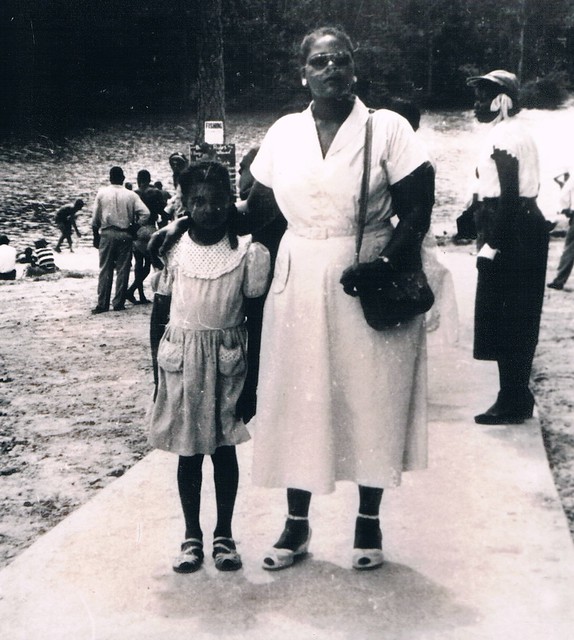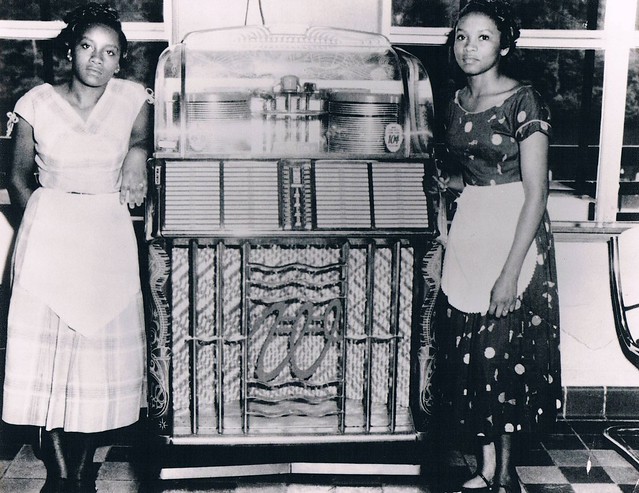A special article in honor of African American History Month
I grew up in Virginia and was alive during the late 50s and 60s as we wrestled with the desegregation of schools and public facilities. But I was only eight when the Civil Rights Act was passed and only learned as an adult that some of the more publicized events that occurred in the Deep South played out in Virginia as well.
Virginia State Parks were not immune from the upheaval. From its inception in 1936 until 1950, the Virginia State Parks system made no accommodations for people of color. Like most Southern states, Virginia followed the "separate but equal" philosophy and required segregation of public facilities. If you visit the train depot in the Foster Falls area ofNew River Trail State Parkyou will notice that there were separate ticket windows for white and "colored." In the case of state parks though there were no "separate" facilities available.

Park visitors at the beach, Prince Edward State Park for Negroes
(now Twin Lakes State Park)
In 1948, Maceo Martin, an African American from Danville, Va., tried to enter see our article from earlier this month on the details).The other eight Virginia state parks, however, continued to operate under a policy of racial segregation.

The building that is now our snack bar and camp store at Twin Lakes State Park
housed a dining hall for Prince Edward State Park for Negroes that was an
entertainment spot for the community
Another racial discrimination suit was filed in the U.S. District Court on June 21, 1951, by a group of African Americans who were denied admission to Seashore State Park in Virginia Beach (now Brown v. the Board of Education.

Reading the official minutes of the Board and unofficial accounts, it was clear that government and park leaders did all they could to delay integration of park facilities. After Brown and it was clear that they would have to integrate the parks, the reaction was to close them to avoid the issue. I encourage you to read the longer history of what transpired here. At one point as Virginia had lost another court decision, Virginia Attorney General J. Lindsey Almond Jr. suggested to the press that Virginia should get out of the park business as quickly as possible. Fortunately, for Virginia and its citizens, that did not happen. However, First Landing State Park (then known at Seashore) was closed pending the outcome of appeals and other legislation.
Closing the park did not sit well with the community. In the years following the closure, citizen groups, most notably the Princess Anne Garden Club, as well as the Virginia Beach and Norfolk Chambers of Commerce and the local press, began to pressure state authorities to reopen Seashore State Park. The mounting pressure resulted in a gradual, incremental reopening of the park and its facilities. The last holdout was the beach and cabin area and the passage of the Civil Rights Act effectively ended the policy of segregation in Virginia’s State Park System. In February 1965, funds were appropriated to refurbish the cabins at Seashore, and the entire park was soon opened to the public on an integrated basis.

While certainly a most unpleasant story related to a time when government leaders and citizens have a lot to be embarrassed about, what I like about this story is that public support of parks continued to push the issue. The African American community demanded access to public recreation and members of the Virginia Beach community wanted their park back. I particularly love the tie in with the First Landing State Park.

The beach today
